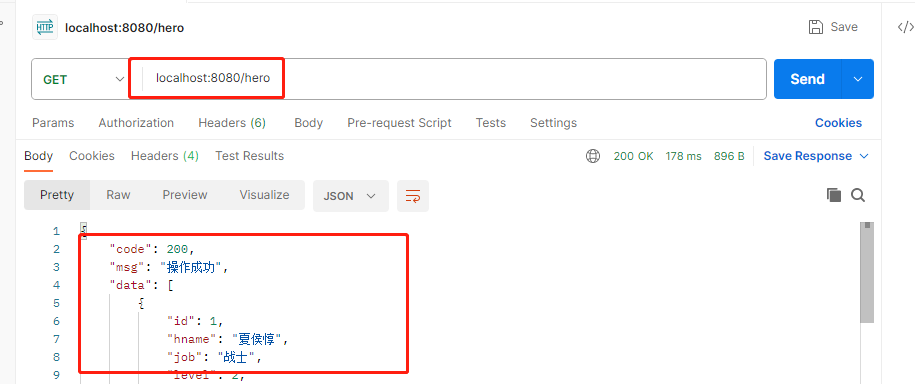精品专题:
01.《C语言从不挂科到高绩点》课程详细笔记
https://blog.csdn.net/yueyehuguang/category_12753294.html?spm=1001.2014.3001.5482
02. 《SpringBoot详细教程》课程详细笔记
https://blog.csdn.net/yueyehuguang/category_12789841.html?spm=1001.2014.3001.5482
03.《SpringBoot电脑商城项目》课程详细笔记
https://blog.csdn.net/yueyehuguang/category_12752883.html?spm=1001.2014.3001.5482
04.《VUE3.0 核心教程》课程详细笔记
https://blog.csdn.net/yueyehuguang/category_12769996.html?spm=1001.2014.3001.5482
05. 《SSM详细教程》课程详细笔记
https://blog.csdn.net/yueyehuguang/category_12806942.html?spm=1001.2014.3001.5482
================================
|| 持续分享系列教程,关注一下不迷路 ||
|| 视频教程:墨轩大楼 ||
================================
📚 一、Rest风格简介
Rest风格是一种表现形式状态转换,它是一种软件架构风格,当我们想表示一个网络资源的时候,可以使用两种方式:
- 传统风格资源描述形式:
http://localhost/user/getById?id=1 查询id为1的用户信息
http://localhost/user/saveUser 保存用户信息
- Rest风格描述形式
http://localhost/user/1
http://localhost/user
传统方式一般是一个请求对应一种操作,这样做不仅麻烦,也不安全,因为会程序的人读取了请求URL地址,就大概知道该URL实现的是一个什么样的操作。
查看REST风格的描述,你会发现请求地址变的简单了,并且如果只看请求URL并不容易猜出该URL的具体功能。
REST的优点:隐藏资源的访问行为,无法通过地址得知对资源是何种操作,并且书写简单。
但是随之而来的就会有一个问题,一个相同的URL地址,即可以是新增也可以是修改或者查询,那么到底该如何区分请求到底是什么操作呢?
REST风格访问资源时使用行为动作区分对资源进行了何种操作:
http://localhost/users 查询全部用户信息 GET(查询)
http://localhost/users/1 查询指定用户信息 GET(查询)
http://localhost/users 添加用户信息 POST(新增/保存)
http://localhost/users 修改用户信息 PUT(修改/更新)
http://localhost/users/1 删除用户信息 DELETE(删除)
请求方式比较多,但是比较常用的有4种,分别是 GET、POST、PUT、DELETE,不同的请求方式代表不同的操作类型:
发送GET请求时做查询操作
发送POST请求时做新增操作
发送PUT请求时做修改操作
发送DELETE请求时做删除
但是需要注意的是,上面的内容仅仅是约定而不是规则,约定是可以打破的,所以称为REST规范而不是REST规则,这就好比变量的命名规范和命名规则一样。
REST提供了对应的架构方式,按照这种架构设计项目可以降低开发的复杂性,提高系统的可伸缩性。REST种规定GET/POST/PUT/DELETE针对的是查询/新增/修改/删除。
📚 二、Restful 入门案例
通常以REST风格对资源进行访问,我们称为Restful,下面我们以一个案例详细了解一下Restful。
🌾 新建项目,并在pom.xml中导入依赖
<dependency>
<groupId>org.springframework</groupId>
<artifactId>spring-webmvc</artifactId>
<version>5.2.10.RELEASE</version>
</dependency>
<dependency>
<groupId>com.fasterxml.jackson.core</groupId>
<artifactId>jackson-databind</artifactId>
<version>2.9.0</version>
</dependency>
<dependency>
<groupId>org.projectlombok</groupId>
<artifactId>lombok</artifactId>
<version>RELEASE</version>
<scope>compile</scope>
</dependency>🌾 在项目的resources目录中新建springmvc.xml
<?xml version="1.0" encoding="UTF-8"?>
<beans xmlns="http://www.springframework.org/schema/beans"
xmlns:xsi="http://www.w3.org/2001/XMLSchema-instance"
xmlns:context="http://www.springframework.org/schema/context"
xmlns:mvc="http://www.springframework.org/schema/task"
xsi:schemaLocation="http://www.springframework.org/schema/beans http://www.springframework.org/schema/beans/spring-beans.xsd http://www.springframework.org/schema/context https://www.springframework.org/schema/context/spring-context.xsd http://www.springframework.org/schema/task http://www.springframework.org/schema/task/spring-task.xsd">
<context:component-scan base-package="com.moxuan.mvc_restful.controller"></context:component-scan>
<mvc:annotation-driven/>
<!-- 配置视图解析器-->
<bean class="org.springframework.web.servlet.view.InternalResourceViewResolver">
<!-- 在/WEB-INF/view/ 目录下,寻找后缀为.jsp的文件-->
<property name="prefix" value="/WEB-INF/view/"></property>
<property name="suffix" value=".jsp"></property>
</bean>
<bean class="org.springframework.web.servlet.mvc.method.annotation.RequestMappingHandlerAdapter">
<property name="messageConverters">
<list>
<bean class="org.springframework.http.converter.StringHttpMessageConverter"/>
<bean class="org.springframework.http.converter.json.MappingJackson2HttpMessageConverter"/>
</list>
</property>
</bean>
</beans>🌾 配置web.xml
<?xml version="1.0" encoding="UTF-8"?>
<web-app xmlns="http://xmlns.jcp.org/xml/ns/javaee"
xmlns:xsi="http://www.w3.org/2001/XMLSchema-instance"
xsi:schemaLocation="http://xmlns.jcp.org/xml/ns/javaee http://xmlns.jcp.org/xml/ns/javaee/web-app_4_0.xsd"
version="4.0">
<servlet>
<servlet-name>restful</servlet-name>
<servlet-class>org.springframework.web.servlet.DispatcherServlet</servlet-class>
<init-param>
<param-name>contextConfigLocation</param-name>
<param-value>classpath:springmvc.xml</param-value>
</init-param>
</servlet>
<servlet-mapping>
<servlet-name>restful</servlet-name>
<url-pattern>/*</url-pattern>
</servlet-mapping>
<filter>
<filter-name>code</filter-name>
<filter-class>org.springframework.web.filter.CharacterEncodingFilter</filter-class>
<init-param>
<param-name>encoding</param-name>
<param-value>utf-8</param-value>
</init-param>
</filter>
<filter-mapping>
<filter-name>code</filter-name>
<url-pattern>/*</url-pattern>
</filter-mapping>
</web-app>🌾 实体类Hero
package com.moxuan.mvc_restful.pojo;
import lombok.AllArgsConstructor;
import lombok.Data;
import lombok.NoArgsConstructor;
@Data
@NoArgsConstructor
@AllArgsConstructor
public class Hero {
private Integer id;
private String name;
private int level;
private String job;
}
🌾 控制器Controller类
package com.moxuan.mvc_restful.controller;
import com.moxuan.mvc_restful.pojo.Hero;
import org.springframework.stereotype.Controller;
import org.springframework.web.bind.annotation.*;
@Controller
public class HeroController {
@RequestMapping(value = "/heros",method = RequestMethod.POST)
@ResponseBody
public String save(@RequestBody Hero hero){
System.out.println("hero save..." + hero);
return "{'message':'hero save'}";
}
@RequestMapping(value = "/heros/{id}",method = RequestMethod.DELETE)
@ResponseBody
public String delete(@PathVariable Integer id){
System.out.println("hero delete..." + id);
return "{'message':'hero delete'}";
}
@RequestMapping(value = "/heros",method = RequestMethod.PUT)
@ResponseBody
public String update(@RequestBody Hero hero){
System.out.println("hero update..." +hero);
return "{'message':'hero update'}";
}
@RequestMapping(value = "/heros/{id}",method = RequestMethod.GET)
@ResponseBody
public String getById(@PathVariable Integer id){
System.out.println("hero getById..." + id);
return "{'message':'hero getById'}";
}
@RequestMapping(value = "/heros",method = RequestMethod.GET)
@ResponseBody
public String getAll(){
System.out.println("hero getAll...");
return "{'message':'hero getAll'}";
}
}
✍️ 【笔 记】 关于@PathVariable,它的作用是绑定路径参数与处理器方法中的参数间的关系,要求路径参数名与方法中的参数名一样。
❓ 【面试题】@RequestBody、@RequestParam 、@PathVariable 都是用来接收参数的,它们之间的区别和应用分别是什么?
区别:
@RequestParam 用于接收url地址传参或表单传参,比如:/getUserById?id=1, 中的id值。
@RequestBody 用于接收Json格式的数据。
@PathVariable 用于接收路径参数,使用{参数名}描述路径参数,比如:/users/{id},中的id值
应用:
后期开发中,发送请求参数超过1个时,建议使用json格式,@RequestBody运用的会比较广泛。
如果发送非json格式数据,选用@RequestParam接收请求参数。
采用RESTful进行开发,当参数数量较少时,例如1个,可以采用@PathVariable接收请求路径变量,通常用于传递id值。
🌾打开PostMan进行测试
1️⃣ 测试新增数据
👀 首先设置content-type为application/json

👀 然后设置json格式的数据,然后以post方式发送请求:

⚠️ 注意: 新增操作,需要发送Post请求
👀 运行结果:

2️⃣ 测试修改数据
👀 修改请求方式为PUT,发送请求

👀 测试结果,如下图所示:

3️⃣ 测试查询数据
👀 修改请求方式为GET,发送请求

请求后面不带数据,表示查询所有的数据,测试结果:

👀 请求方式为GET,在地址后面添加1

请求后面携带的有一个1,表示查询id为1的数据,测试结果:
4️⃣ 测试删除数据
👀 修改请求方式为DELETE发送请求

测试结果如下:
📚 RESTful 快速开发
🌾 问题描述
前面我们使用了restful,可以看出避免了一些请求的外显,而且现在发送请求也相对之前来说简易一些。但是目前任然还存在一些麻烦点,如下图所示:
每个方法的@RequestMapping注解中都定义了访问路径 /heros, 重复性太高了。
每个方法的@RequestMapping注解中都要使用method属性定义请求方式,重复性太高了。
每个方法响应json都需要加上@ResponseBody注解,重复性太高。
🌾 解决方案
- 采用前面讲过的请求路径映射,在Controller类的上方统一加上@RequestMapping
- 使用@RestController 代替@Controller注解,@RestController=@Controller + @ResponseBody.
- 分别使用@PostMapping、@GetMapping、@PutMapping、@DeleteMapping 来替换@RequestMapping中的method设定
👇👇👇且看下面代码
package com.moxuan.mvc_restful.controller;
import com.moxuan.mvc_restful.pojo.Hero;
import org.springframework.web.bind.annotation.*;
/**
* Created with IntelliJ IDEA.
*
* @Author: moxuan
* @Date: 2023/08
* @Description:
*/
@RestController
@RequestMapping("/heros")
public class HeroController {
// @RequestMapping(value = "/heros",method = RequestMethod.POST)
// @ResponseBody
@PostMapping
public String save(@RequestBody Hero hero){
System.out.println("hero save..." + hero);
return "{'message':'hero save'}";
}
// @RequestMapping(value = "/heros",method = RequestMethod.PUT)
// @ResponseBody
@PutMapping
public String update(@RequestBody Hero hero){
System.out.println("hero update..." +hero);
return "{'message':'hero update'}";
}
// @RequestMapping(value = "/heros/{id}",method = RequestMethod.DELETE)
// @ResponseBody
@DeleteMapping("/{id}")
public String delete(@PathVariable Integer id){
System.out.println("hero delete..." + id);
return "{'message':'hero delete'}";
}
// @RequestMapping(value = "/heros/{id}",method = RequestMethod.GET)
// @ResponseBody
@GetMapping("/{id}")
public String getById(@PathVariable Integer id){
System.out.println("hero getById..." + id);
return "{'message':'hero getById'}";
}
// @RequestMapping(value = "/heros",method = RequestMethod.GET)
// @ResponseBody
@GetMapping
public String getAll(){
System.out.println("hero getAll...");
return "{'message':'hero getAll'}";
}
}
✍️ 【笔记】
@RestController
基于SpringMVC的RESTful开发控制器类,设置当前控制器类为RESTful风格,等同于@Controller与@ResponseBody两个注解的组合。
@GetMapping、@PostMapping、 @PutMapping 、 @DeleteMapping
设置当前控制器方法请求访问路径与请求动作,每一种对应一个请求动作,比如@GetMapping对应GET请求。
🌲 综合案例
使用SSM整合RESTful风格实现对英雄数据的增删改查,现在很多新项目都采用前后端分离的方式进行开发,前面在讲SSM整合的时候,我们已经使用过一般风格的方式整合了,这里我们采用前后端分离的方式整合RESTful风格。
🌿 数据表
SET FOREIGN_KEY_CHECKS=0;
-- ----------------------------
-- Table structure for `hero`
-- ----------------------------
DROP TABLE IF EXISTS `hero`;
CREATE TABLE `hero` (
`id` int NOT NULL AUTO_INCREMENT,
`hname` varchar(255) CHARACTER SET utf8 COLLATE utf8_general_ci DEFAULT NULL,
`job` varchar(255) DEFAULT NULL,
`level` int DEFAULT NULL,
`sex` varchar(255) DEFAULT NULL,
PRIMARY KEY (`id`)
) ENGINE=InnoDB AUTO_INCREMENT=14 DEFAULT CHARSET=utf8mb3;
-- ----------------------------
-- Records of hero
-- ----------------------------
INSERT INTO `hero` VALUES ('1', '夏侯惇', '战士', '2', '男');
INSERT INTO `hero` VALUES ('3', '甄姬', '法师', '2', '女');
INSERT INTO `hero` VALUES ('4', '安琪拉', '法师', '3', '女');
INSERT INTO `hero` VALUES ('5', '廉颇', '辅助', '1', '男');
INSERT INTO `hero` VALUES ('6', '张飞', '辅助', '1', '男');
INSERT INTO `hero` VALUES ('7', '后羿', '射手', '3', '男');
INSERT INTO `hero` VALUES ('8', '虞姬', '射手', '3', '女');
INSERT INTO `hero` VALUES ('9', '阿珂', '刺客', '3', '女');
INSERT INTO `hero` VALUES ('10', '孙悟空', '刺客', '3', '男');
INSERT INTO `hero` VALUES ('12', '王昭君', '法师', '3', '女');
INSERT INTO `hero` VALUES ('13', '王昭君', '法师', '3', '女');
🌿 搭建项目环境
🍁创建项目
- 按照下图所示建立项目结构,并导入配置文件,配置文件在本文档后续内容中获取:

- 导入SSM项目整合所需的依赖
<dependencies>
<!--Spring所需Jar-->
<dependency>
<groupId>org.springframework</groupId>
<artifactId>spring-context</artifactId>
<version>${spring.version}</version>
</dependency>
<dependency>
<groupId>org.springframework</groupId>
<artifactId>spring-jdbc</artifactId>
<version>${spring.version}</version>
</dependency>
<dependency>
<groupId>org.springframework</groupId>
<artifactId>spring-context-support</artifactId>
<version>${spring.version}</version>
</dependency>
<!--spring集成Junit-->
<dependency>
<groupId>org.springframework</groupId>
<artifactId>spring-test</artifactId>
<version>${spring.version}</version>
<scope>provided</scope>
</dependency>
<!--Log4j所需Jar-->
<dependency>
<groupId>log4j</groupId>
<artifactId>log4j</artifactId>
<version>1.2.17</version>
</dependency>
<!--AOP所需Jar-->
<dependency>
<groupId>org.aspectj</groupId>
<artifactId>aspectjrt</artifactId>
<version>1.8.10</version>
</dependency>
<dependency>
<groupId>org.aspectj</groupId>
<artifactId>aspectjweaver</artifactId>
<version>1.8.10</version>
</dependency>
<!--Servlet所需Jar-->
<dependency>
<groupId>javax.servlet</groupId>
<artifactId>javax.servlet-api</artifactId>
<version>3.1.0</version>
<scope>provided</scope>
</dependency>
<!--SpringMVC依赖-->
<dependency>
<groupId>org.springframework</groupId>
<artifactId>spring-webmvc</artifactId>
<version>${spring.version}</version>
</dependency>
<!--Mybatis依赖-->
<dependency>
<groupId>org.mybatis</groupId>
<artifactId>mybatis</artifactId>
<version>3.2.2</version>
</dependency>
<!--Spring和Mybatis集成插件-->
<dependency>
<groupId>org.mybatis</groupId>
<artifactId>mybatis-spring</artifactId>
<version>1.2.2</version>
</dependency>
<!--Mysql连接连接驱动-->
<dependency>
<groupId>mysql</groupId>
<artifactId>mysql-connector-java</artifactId>
<version>8.0.25</version>
</dependency>
<!--数据源JDBC、C3P0、Druid-->
<dependency>
<groupId>com.alibaba</groupId>
<artifactId>druid</artifactId>
<version>1.2.8</version>
</dependency>
<!-- JSTL标签类 -->
<dependency>
<groupId>jstl</groupId>
<artifactId>jstl</artifactId>
<version>1.2</version>
</dependency>
<!--可添加-->
<!-- 上传组件包 -->
<dependency>
<groupId>commons-fileupload</groupId>
<artifactId>commons-fileupload</artifactId>
<version>1.3.1</version>
</dependency>
<dependency>
<groupId>commons-io</groupId>
<artifactId>commons-io</artifactId>
<version>2.4</version>
</dependency>
<dependency>
<groupId>commons-codec</groupId>
<artifactId>commons-codec</artifactId>
<version>1.9</version>
</dependency>
<dependency>
<groupId>com.fasterxml.jackson.core</groupId>
<artifactId>jackson-annotations</artifactId>
<version>2.10.2</version>
</dependency>
<dependency>
<groupId>com.fasterxml.jackson.core</groupId>
<artifactId>jackson-databind</artifactId>
<version>2.10.2</version>
</dependency>
<dependency>
<groupId>com.fasterxml.jackson.core</groupId>
<artifactId>jackson-core</artifactId>
<version>2.10.2</version>
</dependency>
<dependency>
<groupId>org.slf4j</groupId>
<artifactId>slf4j-api</artifactId>
<version>1.7.36</version>
</dependency>
<dependency>
<groupId>org.slf4j</groupId>
<artifactId>slf4j-log4j12</artifactId>
<version>1.7.7</version>
</dependency>
<dependency>
<groupId>org.projectlombok</groupId>
<artifactId>lombok</artifactId>
<version>RELEASE</version>
<scope>compile</scope>
</dependency>
<dependency>
<groupId>org.springframework</groupId>
<artifactId>spring-web</artifactId>
<version>5.3.29</version>
</dependency>
</dependencies>- 在resources中添加日志相关的配置文件log4j.properties
#定义LOG输出级别
log4j.rootLogger=INFO,Console,File
#定义日志输出目的地为控制台
log4j.appender.Console=org.apache.log4j.ConsoleAppender
log4j.appender.Console.Target=System.out
#可以灵活地指定日志输出格式,下面一行是指定具体的格式
log4j.appender.Console.layout = org.apache.log4j.PatternLayout
log4j.appender.Console.layout.ConversionPattern=[%c] - %m%n
#文件大小到达指定尺寸的时候产生一个新的文件
log4j.appender.File = org.apache.log4j.RollingFileAppender
#指定输出目录(需要配一个绝对路径)
log4j.appender.File.File = c:/logs/ssm.log
#定义文件最大大小
log4j.appender.File.MaxFileSize = 10MB
# 输出所以日志,如果换成DEBUG表示输出DEBUG以上级别日志
log4j.appender.File.Threshold = ALL
log4j.appender.File.layout = org.apache.log4j.PatternLayout
log4j.appender.File.layout.ConversionPattern =[%p] [%d{yyyy-MM-dd HH\:mm\:ss}][%c]%m%n
🍁日志组件
- 在config包中添加AOP日志切面ServiceLogAspect.java,代码如下:
package com.example.SSM_restful.config;
import org.aspectj.lang.JoinPoint;
import org.aspectj.lang.annotation.Aspect;
import org.aspectj.lang.annotation.Before;
import org.aspectj.lang.annotation.Pointcut;
import org.slf4j.Logger;
import org.slf4j.LoggerFactory;
import org.springframework.stereotype.Component;
import org.springframework.web.context.request.RequestContextHolder;
import org.springframework.web.context.request.ServletRequestAttributes;
import javax.servlet.http.HttpServletRequest;
import java.text.SimpleDateFormat;
import java.util.Date;
@Component
@Aspect
public class ServiceLogAspect {
// 日志记录员
private static final Logger logger = LoggerFactory.getLogger(ServiceLogAspect.class);
@Pointcut("execution(* com.example.SSM_restful.service.*.*(..))")
public void pointcut(){
}
/**
* 前置通知
* @param joinPoint
*/
@Before("pointcut()")
public void before(JoinPoint joinPoint) {
// 用户[IP 地址], 在某个时间访问了 [com.moxuan.SSM.service.xxx]
ServletRequestAttributes attributes = (ServletRequestAttributes) RequestContextHolder.getRequestAttributes();
if (attributes == null) {
return ;
}
// 获取请求
HttpServletRequest request = attributes.getRequest();
// 获取ip
String ip = request.getRemoteHost();
// 获取系统当前时间
String time = new SimpleDateFormat("yyyy-MM-dd HH:mm:ss").format(new Date());
// 获取执行的方法
String target = joinPoint.getSignature().getDeclaringTypeName() + "." + joinPoint.getSignature().getName();
// 记录日志
logger.info(String.format("用户[%s], 在[%s], 访问了[%s].", ip, time, target));
}
}🌿 创建实体类
在entity包中新建实体类Hero,代码如下:
package com.example.SSM_restful.entity;
import lombok.AllArgsConstructor;
import lombok.Data;
import lombok.NoArgsConstructor;
@Data
@NoArgsConstructor
@AllArgsConstructor
public class Hero {
private Integer id;
private String hname;
private String job;
private Integer level;
private String sex;
}
🌿 添加映射器
在dao包中新建HeroDao接口,作为映射器,代码如下:
package com.example.SSM_restful.dao;
@Repository
public interface HeroDao {
}
在resources目录下的mappers中新建数据库映射文件Hero.xml,代码如下:
<?xml version="1.0" encoding="UTF-8" ?>
<!DOCTYPE mapper
PUBLIC "-//mybatis.org//DTD Mapper 3.0//EN"
"http://mybatis.org/dtd/mybatis-3-mapper.dtd">
<!-- 此处的namespace需要对应上dao包中的数据操作接口-->
<mapper namespace="com.example.SSM_restful.dao.HeroDao">
</mapper>🌿 添加配置文件
🍁Mybatis相关配置
在resources目录下新建一个mysql.properties,添加数据源相关配置,代码如下:
driver=com.mysql.cj.jdbc.Driver
url=jdbc:mysql://localhost:3306/study?useUnicode=true&characterEncoding=utf-8
username=root
password=123456
#定义初始连接数
initialSize=0
#定义最大连接数
maxActive=20
#定义最小空闲
minIdle=1
#定义最长等待时间
maxWait=60000在resources目录中新建一个spring-mybatis.xml,配置数据源以及mybatis相关的配置,代码如下:
<?xml version="1.0" encoding="UTF-8"?>
<beans xmlns="http://www.springframework.org/schema/beans"
xmlns:xsi="http://www.w3.org/2001/XMLSchema-instance"
xmlns:context="http://www.springframework.org/schema/context"
xmlns:utils="http://www.springframework.org/schema/util" xmlns:tx="http://www.springframework.org/schema/tx"
xmlns:aop="http://www.springframework.org/schema/aop"
xsi:schemaLocation="http://www.springframework.org/schema/beans http://www.springframework.org/schema/beans/spring-beans.xsd http://www.springframework.org/schema/context https://www.springframework.org/schema/context/spring-context.xsd http://www.springframework.org/schema/util https://www.springframework.org/schema/util/spring-util.xsd http://www.springframework.org/schema/tx http://www.springframework.org/schema/tx/spring-tx.xsd http://www.springframework.org/schema/aop https://www.springframework.org/schema/aop/spring-aop.xsd">
<!-- 自动扫描的路径-->
<context:component-scan base-package="com.example.SSM_restful"></context:component-scan>
<!-- 引入配置文件
classpath:只会到你指定的class路径中查找找文件;
-->
<utils:properties location="classpath*:mysql.properties" id="mysql"></utils:properties>
<!-- 配置数据源-->
<bean id="dataSource" class="com.alibaba.druid.pool.DruidDataSource">
<!-- 配置数据库链接基本信息-->
<property name="url" value="#{mysql.url}" />
<property name="driverClassName" value="#{mysql.driver}"/>
<property name="username" value="#{mysql.username}" />
<property name="password" value="#{mysql.password}" />
<!-- 初始化连接大小-->
<property name="initialSize" value="#{mysql.initialSize}"/>
<!-- 连接池最大数量-->
<property name="maxActive" value="#{mysql.maxActive}"/>
<!-- 连接池最小空闲 -->
<property name="minIdle" value="#{mysql.minIdle}"/>
</bean>
<!-- Mapping 文件-->
<!-- Spring 和mybatis完美整合,不需要mybatis的配置文件-->
<bean id="sqlSessionFactory" class="org.mybatis.spring.SqlSessionFactoryBean">
<property name="dataSource" ref="dataSource"/>
<!-- 配置实体类的别名-->
<property name="typeAliasesPackage" value="com.example.SSM_restful.entity"/>
<!-- 自动扫描mapping.xml映射文件-->
<property name="mapperLocations" value="classpath:mappers/*.xml"/>
</bean>
<!-- Dao 接口-->
<bean class="org.mybatis.spring.mapper.MapperScannerConfigurer">
<!-- 配置 Dao 接口所在的包名,Spring会自动查找其下的类-->
<property name="basePackage" value="com.example.SSM_restful.dao"/>
<property name="sqlSessionFactoryBeanName" value="sqlSessionFactory"/>
</bean>
<!-- (事务管理)transaction manager, use JtaTransactionManager for global tx -->
<bean id="transactionManager" class="org.springframework.jdbc.datasource.DataSourceTransactionManager">
<property name="dataSource" ref="dataSource" />
</bean>
<tx:annotation-driven transaction-manager="transactionManager" />
<aop:config>
<aop:pointcut expression="execution(* com.example.SSM_restful.service.*.*(..))" id="productServiceMethods" />
<aop:advisor advice-ref="txAdvice" pointcut-ref="productServiceMethods" />
</aop:config>
<tx:advice id="txAdvice" transaction-manager="transactionManager">
<tx:attributes>
<tx:method name="save*" propagation="REQUIRED" />
<tx:method name="delete*" propagation="REQUIRED" />
<tx:method name="modify*" propagation="REQUIRED" />
<tx:method name="insert*" propagation="REQUIRED" />
<tx:method name="remove*" propagation="REQUIRED" />
<tx:method name="update*" propagation="REQUIRED" />
<tx:method name="find*" propagation="REQUIRED" read-only="true" />
<tx:method name="get*" propagation="REQUIRED" read-only="true" />
<tx:method name="*" />
</tx:attributes>
</tx:advice>
</beans>🛎️注意:需要将配置文件中的一些路径修改成你自己项目的实际路径
- 自动扫描的路径
<context:component-scan base-package="com.example.SSM_restful"></context:component-scan>- 数据源配置文件路径
<utils:properties location="classpath*:mysql.properties" id="mysql"></utils:properties>- 实体类路径以及映射文件路径
<!-- 配置实体类的别名-->
<property name="typeAliasesPackage" value="com.example.SSM_restful.entity"/>
<!-- 自动扫描mapping.xml映射文件-->
<property name="mapperLocations" value="classpath:mappers/*.xml"/>- 自动扫描dao映射器接口的路径
<!-- 配置 Dao 接口所在的包名,Spring会自动查找其下的类-->
<property name="basePackage" value="com.example.SSM_restful.dao"/>- 事务管理中,service业务层的路径
<aop:pointcut expression="execution(* com.example.SSM_restful.service.*.*(..))" id="productServiceMethods" />🍁 添加springMvc相关配置
在resources目录下,新建spring-mvc.xml,添加关于web相关的配置,代码如下:
<?xml version="1.0" encoding="UTF-8"?>
<beans xmlns="http://www.springframework.org/schema/beans"
xmlns:xsi="http://www.w3.org/2001/XMLSchema-instance"
xmlns:context="http://www.springframework.org/schema/context"
xmlns:anotation="http://www.springframework.org/schema/p" xmlns:mvc="http://www.springframework.org/schema/mvc"
xmlns:aop="http://www.springframework.org/schema/aop"
xsi:schemaLocation="http://www.springframework.org/schema/beans http://www.springframework.org/schema/beans/spring-beans.xsd http://www.springframework.org/schema/context https://www.springframework.org/schema/context/spring-context.xsd http://www.springframework.org/schema/mvc https://www.springframework.org/schema/mvc/spring-mvc.xsd http://www.springframework.org/schema/aop https://www.springframework.org/schema/aop/spring-aop.xsd">
<!--自动扫描包路径,扫描@Controller控制器类-->
<context:component-scan base-package="com.example.SSM_restful"/>
<!-- 开启mvc注解扫描-->
<mvc:annotation-driven/>
<mvc:default-servlet-handler/>
<!-- 开启对aop注解的支持-->
<aop:aspectj-autoproxy/>
<!--
JSON 转换器
-->
<bean class="org.springframework.web.servlet.mvc.method.annotation.RequestMappingHandlerAdapter">
<property name="messageConverters">
<list>
<bean class="org.springframework.http.converter.StringHttpMessageConverter"/>
<bean class="org.springframework.http.converter.json.MappingJackson2HttpMessageConverter"/>
</list>
</property>
</bean>
<!-- 3.x version -->
<!-- HandlerMapping 托管映射处理器 RequestMappingHandlerMapping -->
<bean class="org.springframework.web.servlet.mvc.method.annotation.RequestMappingHandlerMapping"/>
<!-- HandlerAdapter 托管适配处理器 RequestMappingHandlerAdapter-->
<bean class="org.springframework.web.servlet.mvc.method.annotation.RequestMappingHandlerAdapter"/>
<!-- 避免IE执行Ajax时,返回JSON出现下载文件-->
<bean id="mappingJacksonHttpMessageConverter" class="org.springframework.http.converter.json.MappingJackson2HttpMessageConverter">
<property name="supportedMediaTypes">
<list>
<!-- 防止后端返回json对象中文乱码-->
<value>application/json;charset=utf-8</value>
<value>text/html;charset=utf-8</value>
<!-- application 可以在任意 form 表单里面 enctype 属性默认找到 -->
<value>application/x-www-form-urlencoded</value>
</list>
</property>
</bean>
<!-- ViewResolver 托管视图解析器-->
<bean class="org.springframework.web.servlet.view.InternalResourceViewResolver">
<!--前缀-->
<property name="prefix" value="/WEB-INF/jsp/"/>
<!--后缀-->
<property name="suffix" value=".jsp"/>
</bean>
<!-- 配置文件上传,如果没有使用文件上传可以不用配置,当然如果不配,那么配置文件中也不必引入上传组件包 -->
<bean id="multipartResolver" class="org.springframework.web.multipart.commons.CommonsMultipartResolver">
<!-- 默认编码 -->
<property name="defaultEncoding" value="utf-8"/>
<!-- 文件大小最大值 -->
<property name="maxUploadSize" value="10485760000"/>
<!-- 内存中的最大值 -->
<property name="maxInMemorySize" value="40960"/>
</bean>
</beans>🛎️ 配置文件中需要注意的点:
- 开启自动扫描的包路径一定要是自己项目的实际路径
- Restful前后端分离,涉及了频繁的json访问以及json转换,我们添加了json相关的配置,可以帮我们自动进行转换。
- 视图解析器,由于是前后端分离,我们给前端只返回数据,可以不配置
- 文件上传的配置,本案例中不涉及,也可以不配置。
🍁 web.xml配置
在web.xml中配置DispatchcerServlet以及相关过滤器以及监听器等等,代码如下:
<?xml version="1.0" encoding="UTF-8"?>
<web-app xmlns="http://xmlns.jcp.org/xml/ns/javaee"
xmlns:xsi="http://www.w3.org/2001/XMLSchema-instance"
xsi:schemaLocation="http://xmlns.jcp.org/xml/ns/javaee http://xmlns.jcp.org/xml/ns/javaee/web-app_4_0.xsd"
version="4.0">
<context-param>
<param-name>contextConfigLocation</param-name>
<param-value>classpath:spring-mybatis.xml</param-value>
</context-param>
<!-- 配置编码过滤器-->
<filter>
<filter-name>encodingFilter</filter-name>
<filter-class>org.springframework.web.filter.CharacterEncodingFilter</filter-class>
<async-supported>true</async-supported>
<init-param>
<param-name>encoding</param-name>
<param-value>UTF-8</param-value>
</init-param>
</filter>
<filter-mapping>
<filter-name>encodingFilter</filter-name>
<url-pattern>/*</url-pattern>
</filter-mapping>
<!-- Spring 监听器-->
<listener>
<listener-class>org.springframework.web.context.ContextLoaderListener</listener-class>
</listener>
<!-- 防止Spring内存溢出监听器-->
<listener>
<listener-class>org.springframework.web.util.IntrospectorCleanupListener</listener-class>
</listener>
<!-- 配置DispatcherServlet -->
<servlet>
<servlet-name>SSM</servlet-name>
<servlet-class>org.springframework.web.servlet.DispatcherServlet</servlet-class>
<init-param>
<param-name>contextConfigLocation</param-name>
<param-value>classpath:spring-mvc.xml</param-value>
</init-param>
<load-on-startup>1</load-on-startup>
</servlet>
<servlet-mapping>
<servlet-name>SSM</servlet-name>
<url-pattern>/*</url-pattern>
</servlet-mapping>
</web-app>🌿 查询英雄列表
在entity包中新建一个Result类,用来封装后端给前端传输的数据,代码如下:
package com.example.SSM_restful.entity;
import lombok.Data;
/**
* Created with IntelliJ IDEA.
*
* @Author: moxuan
* @Date: 2023/08
* @Description: 对返回数据进行统一封装
*/
@Data
public class Result {
private int code;// 状态码
private String msg;// 消息
private Object data;// 数据源
public static final int SUCCESS_CODE=200;
public static final int ERROR_CODE=-1;
public static final String SUCCESS_MSG="请求成功";
public static final String ERROR_MSG="请求失败";
public static Result success(){
Result result = new Result();
result.setCode(SUCCESS_CODE);
result.setMsg(SUCCESS_MSG);
return result;
}
public static Result error(){
Result result = new Result();
result.setCode(ERROR_CODE);
result.setMsg(ERROR_MSG);
return result;
}
public static Result sendResult(int code, String msg,Object obj){
Result result = new Result();
result.setData(obj);
result.setMsg(msg);
result.setCode(code);
return result;
}
public static Result sendResult(int code, String msg) {
Result result = new Result();
result.setMsg(msg);
result.setCode(code);
return result;
}
}
在controller包中新增HeroController,添加查询的方法,代码如下:
package com.example.SSM_restful.controller;
import com.example.SSM_restful.entity.Hero;
import com.example.SSM_restful.entity.Result;
import com.example.SSM_restful.service.HeroService;
import org.springframework.beans.factory.annotation.Autowired;
import org.springframework.web.bind.annotation.*;
import java.util.List;
@RestController
@RequestMapping("/hero")
@CrossOrigin("*") // 解决前后端分离项目跨域问题,
public class HeroController {
@Autowired
HeroService service;
@GetMapping
public Result heros(){
Result result = service.getAllHeros();
System.out.println(result);
return result;
}
}
注意:
- 查询请求使用的是@GetMapping
- 如果前端项目和后端项目不在同一个服务器,就会存在跨域问题,此时可以在Controller上方添加@CrossOrigin("*"),来解决跨域问题。
在service包中新建HeroService接口,代码如下:
package com.example.SSM_restful.service;
import com.example.SSM_restful.entity.Hero;
import com.example.SSM_restful.entity.Result;
public interface HeroService {
Result getAllHeros();
}在service包中新建impl包,然后在其中新建一个HeroServiceImpl类去实现HeroService接口,代码如下:
package com.example.SSM_restful.service.impl;
import com.example.SSM_restful.dao.HeroDao;
import com.example.SSM_restful.entity.Hero;
import com.example.SSM_restful.entity.Result;
import com.example.SSM_restful.service.HeroService;
import org.springframework.beans.factory.annotation.Autowired;
import org.springframework.stereotype.Service;
import java.util.List;
@Service
public class HeroServiceImpl implements HeroService {
@Autowired
private HeroDao dao;
@Override
public Result getAllHeros() {
List<Hero> heroList = dao.findAllHeros();
if (heroList.size()==0){
return Result.sendResult(Result.ERROR_CODE,"未查询到数据");
}
return Result.sendResult(Result.SUCCESS_CODE,"操作成功",heroList);
}
}
在HeroDao中添加查询数据的方法,findAllHeros(),代码如下:
@Select("select * from hero")
List<Hero> findAllHeros();启动服务器,打开postman进行测试:

🌿 根据id查询数据
接下来我们来看看,如果要查询id为1的英雄数据,按照restful风格的话,我们的地址就需要使用:http://localhost:8080/hero/1
在HeroController中添加处理根据id查询数据的请求方法,在请求的@GetMapping 中添加{id},然后使用@PathVariable获取请求中的参数值,代码如下:
@GetMapping("/{id}")
public Result getHeroByID(@PathVariable int id){
Result result = service.getHero(id);
return result;
}在HeroServiceImpl中实现getHero方法,代码如下:
@Override
public Result getHero(int id) {
Hero hero = dao.findHeroById(id);
if(hero==null){
return Result.sendResult(Result.ERROR_CODE,"未查询到数据");
}
return Result.sendResult(Result.SUCCESS_CODE,"操作成功",hero);
}在HeroDao中添加findHeroById方法,代码如下:
@Select("select * from hero where id=#{id}")
Hero findHeroById(@Param("id") int id);打开Postman进行测试:

🌿 添加英雄数据
- 做添加操作时,我们需要处理的请求是Post请求,我们在HeroController中添加对应的处理请求的方法,代码如下:
@PostMapping
public Result saveHero(Hero hero){
Result result = service.saveHero(hero);
return result;
}- 在业务层中,添加saveHero的实现方法,代码如下:
@Override
public Result saveHero(Hero hero) {
int num = dao.addUser(hero);
if(num==0){
return Result.sendResult(Result.ERROR_CODE,"添加数据失败");
}
return Result.sendResult(Result.SUCCESS_CODE,"成功添加数据");
}- 在HeroDao中添加对应的方法,代码如下:
@Insert("insert into hero (hname,job,level,sex) values(#{h.hname},#{h.job},#{h.level},#{h.sex})")
int addUser(@Param("h") Hero hero);- 打开postman进行测试:

🌿修改数据
- 做修改操作时,我们需要处理的请求是Put请求,我们在HeroController中添加对应的处理请求的方法,代码如下:
@PutMapping
public Result updateHero(Hero hero){
Result result = service.updateHero(hero);
return result;
}- 在业务层Service中添加对应的方法,代码如下:
@Override
public Result updateHero(Hero hero) {
int num = dao.updateHero(hero);
if(num==0){
return Result.sendResult(Result.ERROR_CODE,"修改数据失败");
}
return Result.sendResult(Result.SUCCESS_CODE,"成功修改数据");
}- 在HeroDao中添加对应的updateHero方法,代码如下:
@Update("update hero set " +
" hname=#{h.hname}," +
" job=#{h.job}," +
" level=#{h.level}," +
" sex=#{h.sex} " +
"where id=#{h.id}")
int updateHero(@Param("h") Hero hero);- 打开postman测试
🌿 删除数据
- 删除数据时,我们需要处理的请求是Delete请求,我们在HeroController中添加对应的方法,代码如下:
@DeleteMapping("/{id}")
public Result deleteHero(@PathVariable int id){
Result result = service.deleteHero(id);
return result;
}- 在业务层Service中添加对应的deleteHero方法,代码如下:
@Override
public Result deleteHero(int id) {
int num = dao.deleteHero(id);
if(num==0){
return Result.sendResult(Result.ERROR_CODE,"删除数据失败");
}
return Result.sendResult(Result.SUCCESS_CODE,"成功删除数据");
}- 在HeroDao中添加deleteHero方法,代码如下:
@Delete("delete from hero where id=#{id}")
int deleteHero(@Param("id") int id);- 打开Postman进行测试:

至此,案例中后端部分功能接口已经完毕,前端只需按照对应的接口要求发送请求和数据即可。



















